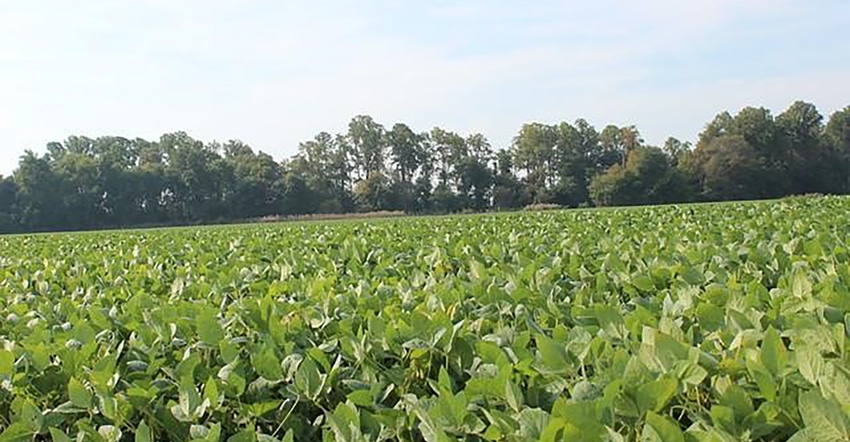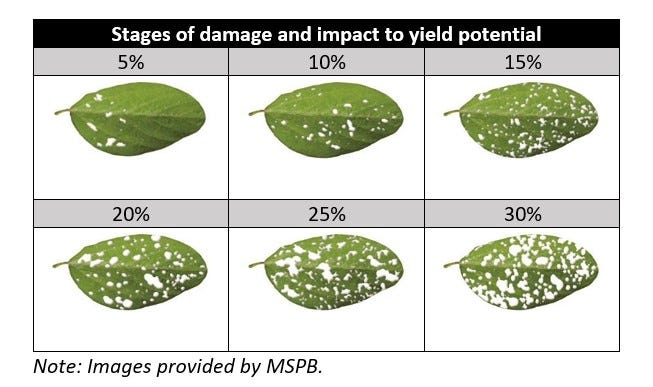
Sponsored Content
Every season presents unique challenges to grow high-quality soybeans. Through summer weather, the hot and humid environment becomes the ideal conditions for diseases, weeds and insects to thrive. Timely and proactive scouting is key to staying ahead of yield-robbing threats to soybeans to remain successful at the end of the season.
Review these tips and download your own scouting guide at MSSOY.org.
Manage diseases early
In the Midsouth region, we can face a range of different types of soybean diseases. Diseases in the field can cause an immediate impact that will ultimately hurt a farm’s bottom line. Many can be controlled, but timely scouting and awareness of diseases are key to keeping them from spreading.
As farmers are in the field and evaluating their soybeans, they should look for any signs of disease stress starting in areas with poor drainage or water damage. Infected plants will display symptoms such as spots or lesions on leaves or stems, discoloration, stem rot or seed rot.
Some of the more common diseases encountered by farmers in the Midsouth are frogeye leaf spot, charcoal rot and Cercospora leaf blight. And that’s just the beginning. Identifying and determining diseases early is crucial to developing the right plan of action for each field.
Depending on what disease is present, there may or may not be a way to protect soybean yield. Many foliar diseases can be remedied by a foliar fungicide application based on plant stage. However, some diseases such as Pythium root rot are prevented before the beginning of the season using seed treatments or field maintenance such as improved drainage.
Insect pressures all season long
Each year, controlling insect populations in Midsouth soybean fields should be at the top of every producer’s list. As crops emerge, farmers need to get out early and evaluate if insects are present in their field, and if so, determine if they are at treatment threshold.
The level of insect damage to a field can be determined by the amount of feeding on plant leaves. This level of damage can correlate to the expected impact to a farmer’s bottom line.

Farmers should record scouting results all season long and review those scouting results to determine conditions that created increased disease or insect pressure during the season. This will help guide soybean variety selection for the next season and assist farmers in selecting varieties with a trait package or with a seed treatment that will provide a level of yield security against expected disease and insect pests. As farmers scout their fields, they should identify the soybean stage at the time of the damage, and the insect responsible. This information is the groundwork to develop the right management plan to prevent increased damage and preserve yield potential.
The Mississippi Soybean Promotion Board consistently supports research to uncover new solutions to help farmers improve their yield and ultimately their bottom line. More resources and tips, including a scouting guide, are available at MSSOY.org.
About the Author(s)
You May Also Like




